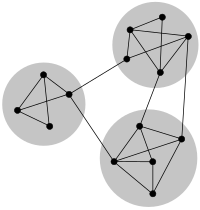
Photo from wikipedia
Graph representation learning has been extensively studied in recent years. It has been proven effective in network analysis and mining tasks such as node classification and link prediction. Learning method… Click to show full abstract
Graph representation learning has been extensively studied in recent years. It has been proven effective in network analysis and mining tasks such as node classification and link prediction. Learning method based on neural network has become mainstream solution because it can efficiently preserve nonlinear characteristics of graph. However, more efficient ways to encode complex graph structures are still being explored. In this paper, for undirected graphs, we present a novel Motif-Aware Generative Adversarial Network (MotifGAN) model to learn graph representation based on a re-weighted graph, which unifies both the Motif higher order structure and the original lower order structure. Firstly, we obtain the motif adjacency matrix by motif mining, which encodes the Motif higher order structure. Then we couple the motif adjacency matrix with the adjacency matrix of the original graph to get a reweighted matrix named motif connectivity matrix. The motif connectivity distribution implicit in the motif connectivity matrix is the target structure information we need to preserve. How to preserve a wealth of structural information is a challenge. Inspired by related applications of GAN, we formulate a GAN model to generate embedding representations that satisfy the target structure conditions. The GAN model usually consists of two components: generator and discriminator. Our generator tries to approximate the motif connectivity distribution, while the discriminator detects whether the connectivity of two vertexes is from ground truth or generated by the generator. In adversarial training, both parts can alternately and iteratively boost their performance. Experimental results on public datasets show that MotifGAN has made substantial progress in various applications, including link prediction, node classification and visualization.
Journal Title: IEEE Access
Year Published: 2022
Link to full text (if available)
Share on Social Media: Sign Up to like & get
recommendations!